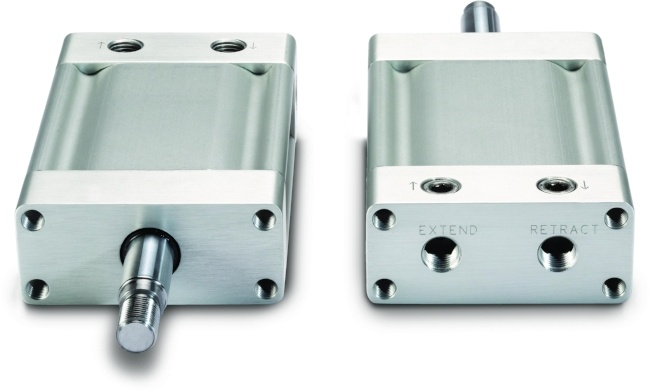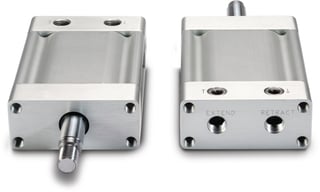
 There is no doubt that when designing a complex piece of specialized equipment pneumatic rod cylinders have a lot of advantages. For one, there is no better way to pack a big punch in a small package when you need it. However, it’s not like one size fits all. You need to find the right fit for your application, so these are a few key questions to ask when applying pneumatic rod cylinders to your mechanical design.
There is no doubt that when designing a complex piece of specialized equipment pneumatic rod cylinders have a lot of advantages. For one, there is no better way to pack a big punch in a small package when you need it. However, it’s not like one size fits all. You need to find the right fit for your application, so these are a few key questions to ask when applying pneumatic rod cylinders to your mechanical design.
1. What is the stroke length of the required cylinder?
A standard pneumatic actuating cylinder does take up space. The first thing to ask yourself is what stroke length is needed to push or pull the load. You can multiply the stroke length by 2 to give you a general idea of the space that you will need to fit the cylinder.
2. What is the required force of the cylinder to determine bore size?
Now, you will need to determine the bore size of the cylinder to verify the amount of extend and retract force it produces and whether or not it is sufficient for your application.
Once you know the maximum pressure you can operate under, the bore size can be calculated by multiplying it by the area of the piston at any given bore. This can be found with your basic circular geometry, where the area is the square of the bore divided by four times 3.14 for the extend force and square of the bore minus the square of the rod diameter divided by four times 3.14 for the retract force. Multiplying that by the pounds per square inch available gives you the maximum force.
Note: Most pneumatic rod cylinder manufacturers have sizing tables for quick reference showing the expected forces at given PSIs for various bore sizes.
3. Guiding or non-guiding of the load
After determining the stroke and bore size of the pneumatic rod cylinder needed, you will need to determine if the cylinder can guide or support the load. If not, you will you need to add an external guiding mechanism.
You can quickly see in the manufacturer's sizing criteria by comparing the stroke length to the load weight. If it is excessive for the cylinder bore size that you initially chose then take a look at the next largest bore size. If that doesn't work, then it's suggested to either look at what available guiding accessory options are available for the cylinder or to construct an externally guiding and load support arrangement for your application.
4. What mounting considerations are there?
With such a big punch, pneumatic cylinders need to be mounted properly. In order to make sure you have enough space, it is important to not forget the necessary brackets and hardware!
5. What is the orientation of the cylinder?
Since there is so much movement on a pneumatic cylinder, it is critical that the entire operation can take place without interference from any other parts. The orientation to the rest of the machine is critical. Also, consider safety should a machine operator be nearby the movement.
6. Is clean dry air available and at what pressure for the application?
Very often, cylinders are limited by the quality of the air available to actuate them. It has to be clean and dry and at a pressure that will deliver the force you need.
7. What are the environmental considerations?
Is there is a lot of dust, humidity, or excessive temperature involved with your application? Will you need to wash down your cylinder? If yes, then you will need to look at special coatings, seals, fasteners and perhaps even a stainless steel configuration. You'll also need to have access to your pneumatic cylinder in order to maintain it properly. A hallmark of good design is to take into account the entire life cycle of your equipment, and cylinders do require maintenance in order to keep running properly for many years — especially under harsh conditions.
These are the key questions you need to ask yourself in order to add a pneumatic cylinder to anything you are designing. These powerful actuators offer many advantages, but they do require a design that takes into account their needs. Taking care up front assures that you will have a well-functioning machine will provide you with years of proper use without worries.


